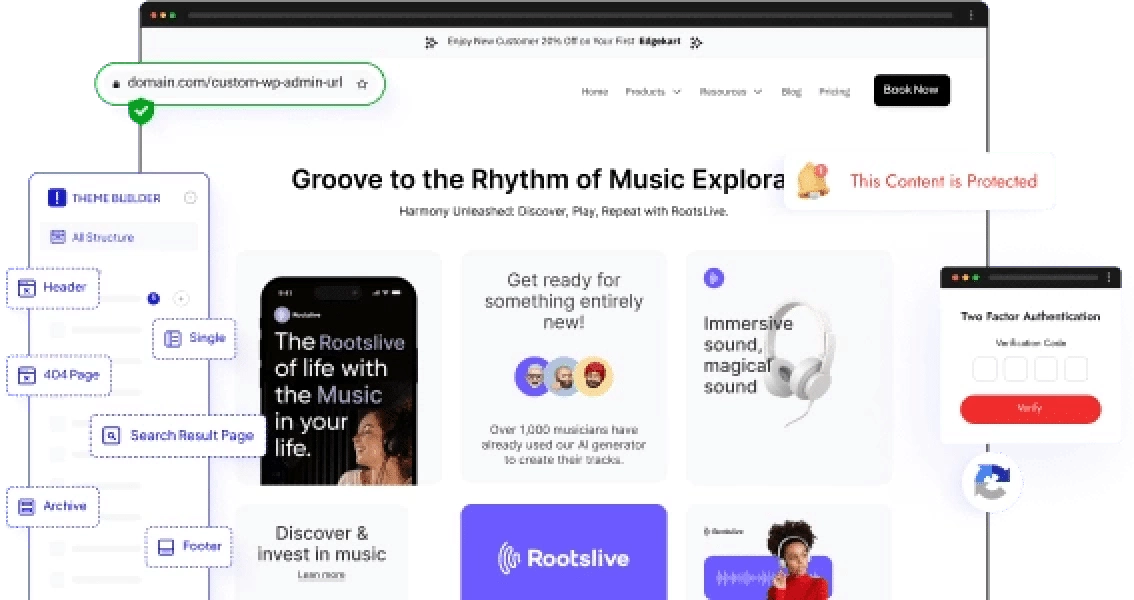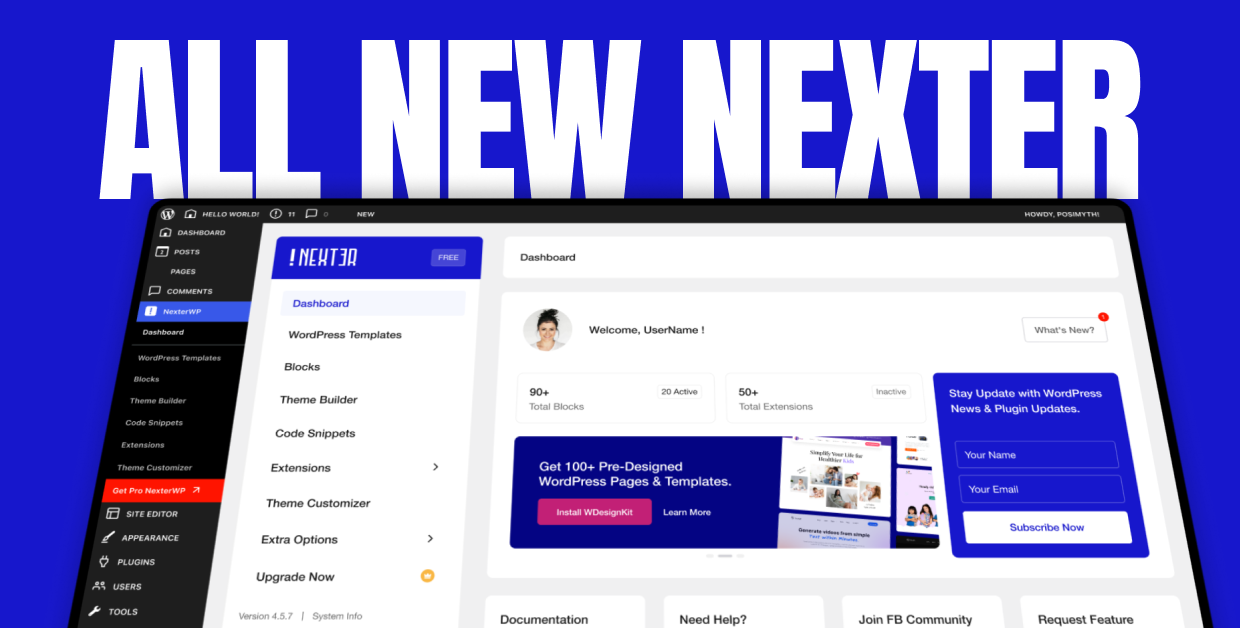Creating a portfolio page on WordPress is an essential step in building an online presence and showcasing your work. With WordPress, you can create a portfolio page that looks great and is easy to manage, customize, and update. Whether you’re a freelancer or business owner, having a portfolio page is an essential marketing tool that helps you get your work seen and serves as an online representation of your brand.
Having your work on a portfolio page is an asset for any business. However, showing your creative work inside a device mockup can give your portfolio page a unique and attractive look.
The Dynamic Device block from the Nexter Blocks is a powerful block that allows you to add and interact with different types of content inside a device mockup.
Required Setup
- Make sure the default WordPress Block editor is active.
- You need to have the Nexter Blocks plugin installed and activated.
- This is a premium block; you need the PRO version of the Nexter Blocks.
- Make sure the Dynamic Device block is activated. To verify this, visit Nexter → Blocks → and search for Dynamic Device and activate.
How to activate the Dynamic Device Block?
Go to
- Nexter → Blocks
- Search the block name and turn on the toggle.

Key Features
- Different types of content – You can show different types of content like Image, Pattern and iFrame.
- Multiple layouts – You can either show your content in a static mockup or a slider.
- Multiple device options – You can choose from multiple device options or you can add your custom mockup as well.
- Image scrolling effect – Easily create an image scrolling effect inside a device mockup.
- Manual scrolling – You can also add a manual scrolling effect to your image.
- Dynamic Device Connection ID – You can connect multiple Dynamic Device blocks to create a simultaneous scrolling effect.
How to add content in the Dynamic Device Block in WordPress?
Add the Dynamic Device block to the page.
Then click on the Design from Scratch button to design the layout from scratch.

Note: By clicking on the Import Pre-Designed Template button, you can import a preset template and customize it as per your requirements.
Now, you’ll see a mockup device.
In the Layout section under the Dynamic Device tab, you’ll find two options –
- Normal – For creating a normal mockup layout.
- Carousel – This option lets you create a slider inside the mockup. Learn more about the process.
When you set the layout to Normal, from the Device Type section, you can choose different device types like Mobile, Tablet, Laptop, Desktop, or even upload a custom mockup.
Depending on the device type, you’ll get to choose relevant device mockups from the relevant Device dropdown.
Then, from the Content section, you’ll have to select the content type. Here you’ll find three options –
Image – In this option, you can use an image as the content of your mockup device. You can add a link to your image with an option to open it in a normal browser or popup.
Using this option, you can create a scrolling image effect inside the mockup device. Learn more about the process.
Pattern – Using this option you can add different types of content like video, products or even an entire layout inside the mockup making it a very powerful option. Learn more about it.
IFrame – If you want to show a third party website inside your mockup device, you can use this option. Learn the process.
When you use Image or Pattern as the content type, you can add an icon to your mockup using the Show Icon toggle.
How to style Dynamic Device Block in WordPress?
If you want to adjust the styling of your device mockup content, you can do that from the Style tab. Depending on the choice of the Layout and Content type, styling options will vary.
Layout Type – Normal

Device Layout – You can adjust the mockup layout width, alignment, padding, and margin from this tab.
Icon – If you have added an icon to your device mockup, you can manage the style from here, adjust the icon size, add animation to the icon, etc.
FancyBox Option – You can add some buttons to the image link popup from this tab.
Image – If you select the image option as the content type, you’ll see this option. From here, you can add an image scrolling effect, set transition duration, add manual scrolling, and adjust the image border-radius.
If you add manual scrolling, you’ll get the option to style the scroll bar.
You can also connect multiple Dynamic Device blocks from this section. Learn more about the process.
Device Background – From this tab, you can add a drop shadow effect to your content for normal and hover states.
Layout Type – Carousel

Device Layout – You can adjust the mockup layout width, alignment, padding, and margin from this tab.
Mockup – From this tab, you can manage the mockup height, width, and position for different devices.
Image – You can adjust the image border-radius, height, width, and position for different devices from this tab. You can manage the image Z-Index as well.
Carousel Options – From here, you can choose the carousel columns to be Single or Multiple. You can adjust the carousel speed, turn the carousel into an infinite loop slider. You can also make the carousel autoplay and adjust its speed.
You can add dots and arrows navigation to the carousel. With both navigation types, you’ll get relevant styling options as well.
If you are using the Multiple column option, you can use Center Padding, Center Slide Effect, Box Shadow and Normal Slide Opacity options to differentiate the center slide item from the rest of the slides.
Carousel Slide – You can adjust slide margin, width and space between slides for different devices.
Device Background – From here, you can add a box shadow to your content for normal and hover states.
Advanced options remain common for all our blocks, you can explore all it options from here.












